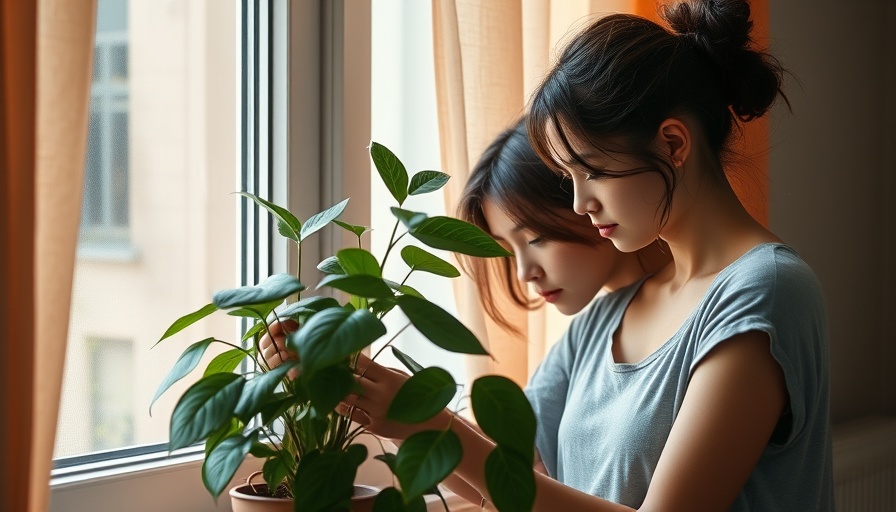
Brewing Creativity: Growing Your Own Coffee Indoors
Have you ever dreamed of sipping a cup of freshly brewed coffee made with beans harvested right from your own home? Growing coffee indoors is not just a possibility; it's a delightful challenge that can yield spectacular results. In a world where home gardening is becoming increasingly popular, the coffee plant stands out—not only for the unique aesthetic it provides but also for its potential to enrich your mornings.
Selecting the Ideal Coffee Variety for Indoor Growth
Your coffee journey begins with the right choice of plant. Arabica coffee, especially the dwarf Arabica 'Nana', thrives beautifully in indoor environments. With its compact growth, it fits snugly in small spaces while promising a fragrant and rewarding harvest. Unlike its taller counterparts like robusta, which demand more light and larger pots, this variety is perfect for homeowners wanting a touch of greenery without the hassle of extensive upkeep.
To ensure you are choosing a healthy seedling, check for vibrant green leaves and a sturdy stem, indicating resiliency. Look for plants certified free of pests and root complications. When purchasing, always opt for reputable nurseries that guarantee the authenticity of their seeds, steering clear of generic hybrids that might not offer the rich flavor profiles of true arabicas.
Mastering the Art of Transplanting Coffee Plants
Transplanting your coffee plant is pivotal in its growth journey. A stress-free transplant ensures healthy roots, which are crucial for nutrient uptake. Choose a pot that’s adequately sized to prevent root-binding. A high-quality soil mix that facilitates drainage while retaining adequate moisture will boost your plant's growth. Proper handling techniques to avoid damaging the roots are essential during this phase, so take your time and ensure a smooth transition.
Creating the Perfect Environment for Indoor Coffee Growth
Indoor coffee plants thrive under indirect sunlight, favorable humidity, and balanced watering practices. Setting up a growing area where the plant receives filtered light will replicate its native habitat. A range of 65°F to 75°F (18°C to 24°C) in temperature is optimal for growth. Consider investing in a humidifier if dry conditions are prevalent in your home, as coffee plants appreciate moderate to high humidity levels.
Watering is another essential aspect – overwatering can lead to root rot, while underwatering can cause stress. A golden rule is to let the top inch of soil dry out before watering again, maintaining the balance between hydration and respiration.
Harvesting Your Homegrown Coffee Beans: What to Expect
The thought of harvesting your coffee beans is exhilarating! Typically, it takes about 3 to 4 years for arabica plants to mature and produce cherries. Once flowering begins, each small white bloom will yield coffee cherries over the seasons. Harvesting involves picking the zesty red or yellow cherries as they ripen, ensuring you only select the mature ones for a flavorful brew.
After harvesting, the next step is processing the cherries to extract the beans. This involves drying, fermenting, and eventually roasting. While it may seem like a long process, the satisfaction of brewing a cup from your homegrown beans is unparalleled.
Benefits of Growing Coffee Indoors
Beyond the novelty of home-grown coffee, there are some intriguing benefits to cultivating these plants indoors. Coffee plants can improve indoor air quality by absorbing toxins and releasing oxygen. Furthermore, the nurturing process cultivates patience and mindfulness—a beautiful way to connect with nature amid a busy urban lifestyle.
Final Thoughts: Start Your Indoor Coffee Adventure Today!
So, whether you consider yourself a seasoned gardener or a budding enthusiast, growing coffee indoors offers an opportunity worthy of exploration. By choosing the right variety, providing the care it needs, and anticipating a delightful harvest, you can transform your indoor space into a coffee haven. Start your coffee growing adventure today, and enjoy every aromatic moment!
 Add Row
Add Row  Add
Add 




Write A Comment